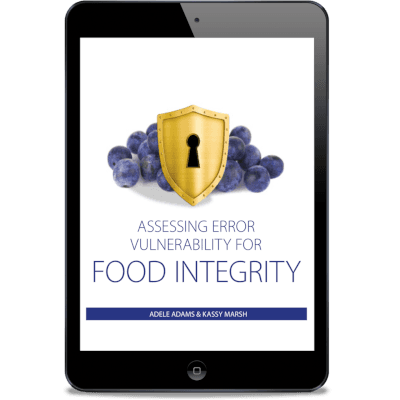Description
The issue of food integrity is one of legal and moral obligation to the consumer and is becoming increasingly important to brand protection within the food industry. As a consequence, the need for a systematic approach to the task of identification, assessment and management of the errors that compromise the integrity of the product is required.
Ensuring that claims on pack are adhered to has always been a legal requirement, however the industry is having to move with the times and not only meet the legal requirements but also adhere to their moral obligation to the consumer.
The horsemeat scandal was a turning point for the food industry. It highlighted the vulnerability to fraud in the supply chain, and also raised awareness of the impact of cross-contamination within the manufacturing process, which could put the integrity of the product at risk.
It is essential to brand integrity to ensure that food manufacturers take an ethical approach to ensuring that claims on pack are adhered to. The legal requirement is no longer the only obligation, but it is key to consider what the consumer would think or feel if they were to understand how the product was processed.
The integrity of the product may be compromised by quality or legal issues, rather than just food safety hazards, therefore the typical HACCP style assessment is not applicable. The current threat assessment methodology is also not suitable, as compromise to a product integrity tends to be due to errors within the manufacturing process and therefore is not a deliberate act.
A new methodology, to assess the vulnerability of these errors occurring and the subsequent compromise of product integrity, is therefore required. This book takes the pioneering methodology from the previous publication “Assessing Threat Vulnerability for Food Defence” and builds on it, to provide an approach to assessing the errors that may occur during the manufacturing process, which may compromise the integrity of the product.






Reviews
There are no reviews yet.